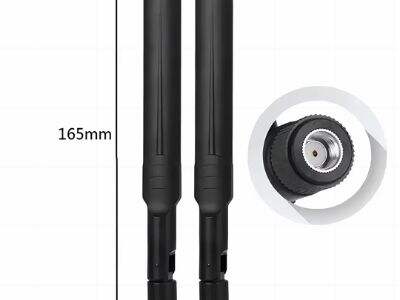How Cable Loss Affects Antenna Efficiency in Remote Base Stations
Since all of that cable loss is happening at the antenna on a remote base station, it’s obviously good to know how it interacts with communication. When signals travel from the base station to the antenna, they can weaken in strength from the cables that transmit it. This loss can weaken the signal and also make the antenna not work as well, which is bad for how well the communication network works.
Understanding how cable loss affects the efficiency of the antenna can allow antennas to work in remote areas. If we can keep the losses low in the cables, we can increase the strength of signal and the antenna will be able to operate at its maximum. That can result in clearer communication, speedier data transfer and a more reliable network in distant locales.
Advantages
To get antennas to function well in remote base stations, we have to really carefully manage the cables. Good quality of cables that don't lose to many signals which helps the antenna a lot. Equally important is installing and caring for the cables properly, so your signal stays strong, and doesn’t get weaker over time.
The intangible costs of cable loss in communication networks can be high. Not only does that impact how effectively the antenna operates, but it can consume more power in doing so and lessen the distance the network travels. This can translate into poorer performance at a higher cost, so remote base stations must have their cable loss problems solved.
Benefits
Goood cable management is a must if we’re going to fix the antenna efficiency woes in the hinterlands. By selecting the appropriate cables and installing them correctly, we can amplify the signal strength and improve the antenna performance. This may result in better communication, and a more robust network even in hard-to-reach remote places.
Good 5 g antenna in base stations results in better signal strength, which is essential for the antenna to work well. By resolving cable losses and utilizing best cable management practices, we can ensure that the antenna performs at its best. The result can be clearer communications, quicker data transfer and more dependable networks in remote base stations.
Summary
In a nutshell, the loss of cable can have a significant impact on how well antennas do in distant base stations. If we can address this issue - optimizing antenna performance, and addressing hidden costs, overcoming obstacles and enhancing signal quality through good cable management - we can ensure communication networks in even remote locales work properly. With strategy, we can make antennas in remote base stations more efficient and reliable, and bring better communication to all.

 EN
EN
 ES
ES
 PT
PT
 NL
NL
 AR
AR
 HR
HR
 CS
CS
 DA
DA
 FI
FI
 FR
FR
 DE
DE
 EL
EL
 IT
IT
 JA
JA
 KO
KO
 NO
NO
 PL
PL
 RO
RO
 RU
RU
 SV
SV
 TL
TL
 IW
IW
 ID
ID
 LT
LT
 SR
SR
 SK
SK
 SL
SL
 UK
UK
 VI
VI
 ET
ET
 HU
HU
 MT
MT
 TH
TH
 TR
TR
 FA
FA
 GA
GA
 BE
BE
 IS
IS
 LB
LB
 BG
BG

/images/share.png)

